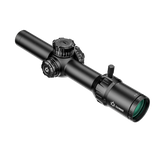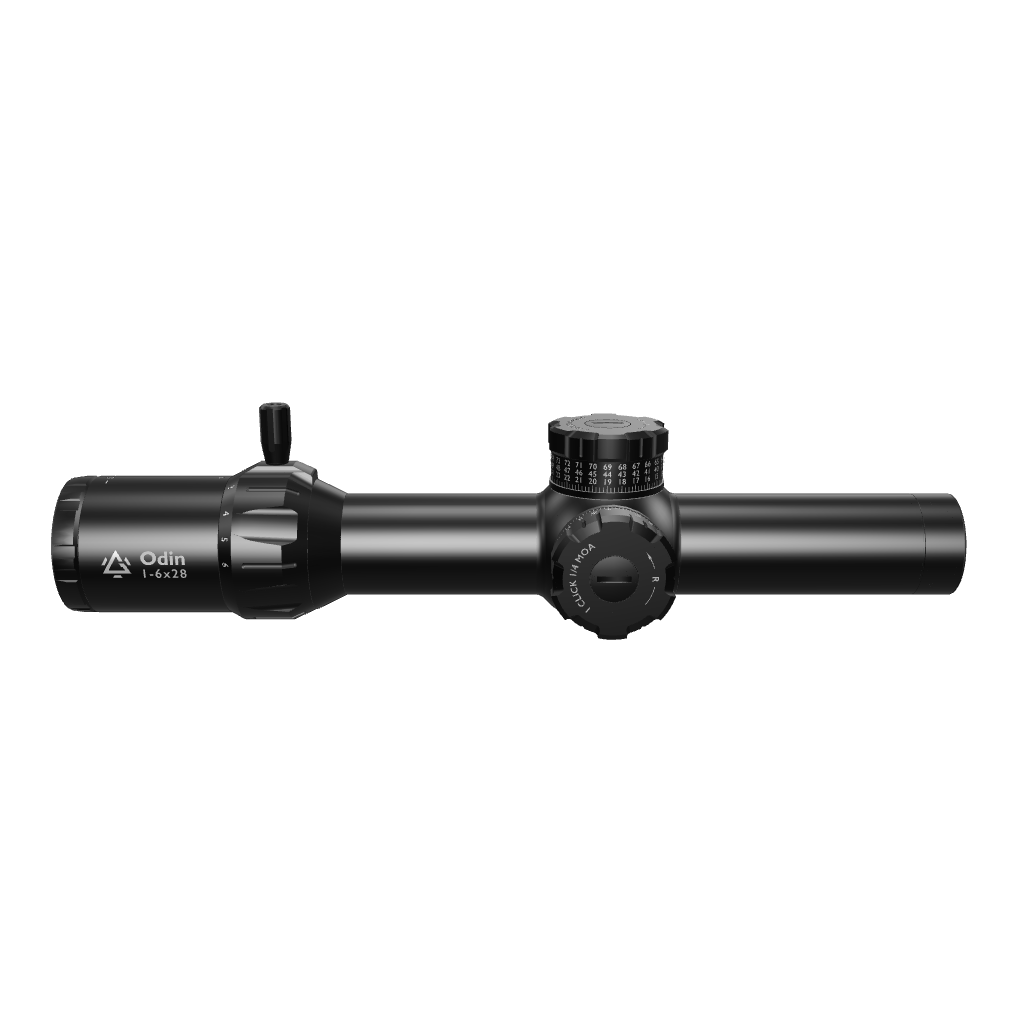Does LPVO parallax really affect shooting accuracy?
What is parallax?
In everyday life, parallax usually refers to the phenomenon where an object appears to shift its position in the visual frame when the observer's viewpoint changes. This means there is a difference between “what you see" and "where the object actually is.”
For example, when you use your phone to focus on a distant object, if you slightly tilt the phone or move your eye around the viewfinder, you'll notice the object appears to move slightly in the frame. This phenomenon is a typical example of the parallax effect.
What is parallax in optics?
In shooting and optical aiming, parallax in optics describes the situation where the target appears to shift within the optic when the shooter's eye is not perfectly aligned with the optical focal plane. This can affect the actual point of impact.
This type of error needs special attention when using an LPVO, which is why it's often referred to as parallax in LPVO.
For example, when aiming at a target 100 meters away, if the scope's parallax is not properly adjusted, even if your shooting position is very stable, the aiming point and the actual point of impact may not line up. This kind of offset is minor at low magnification and short distances, but it becomes much more pronounced at high magnification and long distances, which can lead to critical errors during hunting, tactical shooting, or competitions.

Why LPVO scope parallax issues are more noticeable
LPVOs have a major advantage: they allow shooters to easily switch from low to high magnification and support rapid target acquisition with both eyes open. While this flexibility helps shooters quickly engage close targets and precisely shoot at mid to long range targets, it also makes parallax issues more noticeable. The main reasons are:
-
Magnification increases parallax error
At low magnification, slight eye position shifts have little effect on the point of impact. But at high magnification, even a tiny shift in eye position will be amplified, and the bullet can hit several inches off target a critical issue for accurate long-range shooting. -
Shooting with both eyes open increases the risk of eye position changes
When shooting with both eyes open, the shooter's eye is not always fixed in the same position. If parallax is not properly adjusted, the point of impact will shift along with eye movement, which is especially obvious during quick reaction shots.
What is parallax adjustment and why it matters
The purpose of parallax adjustment is to align the scope's focal plane with the target distance. You can think of it as "placing the optic lens and the target on the same plane," ensuring that the reticle doesn't drift no matter which angle you look from, so the aiming point and point of impact line up precisely.
For an LPVO, which need to handle both fast aiming at low magnification and precise shooting at high magnification, parallax adjustment is essential for maintaining accuracy. If parallax adjustment is ignored during high magnification, long distance shooting, the point of impact can shift significantly, reducing shooting performance.
Parallax Adjustment Procedure
Safety First: Before starting, always make sure the rifle is unloaded and the magazine is removed. Keep the muzzle pointed in a safe direction at all times. Wear eye and ear protection, and follow all range or field safety rules.
Step 1: Establish a Stable Shooting Position and Support
Place the rifle in the shooting position you normally use (standing/kneeling/prone) and support it with sandbags, a shooting rest, or your hands. The goal is to simulate your real firing posture and eye position. Avoid using unnatural positions when checking parallax, as this will affect the accuracy of the adjustment.
Step 2: Choose a Representative Target and Distance
Select a distance that matches your typical shooting scenario, for example: 25–50m for defensive use, 100m for training, and 200m+ for long range shooting. Use a clear dot or cross on the target as your aiming point to make it easier to observe any shift.
Step 3: Aim at Normal Magnification and Check for Eye Position Shift
Set your LPVO to your usual magnification or slightly higher (for example, if you normally use 4×, try 6×). Aim at the target with your natural eye position. Without moving the rifle, slowly move your eye left/right and up/down about 5-10mm and see if the reticle shifts in relation to the target.
Observation point: If the reticle moves off the target when your eye moves, there is parallax and it needs to be adjusted.
Step 4: Adjust the Parallax Until the Reticle Stays Stable
Locate the parallax adjustment on your scope, it may be a side focus knob (on the left side of the tube) or an adjustable objective (AO) ring on the rear. Slowly turn the adjustment while moving your eye around until the reticle stays centered on the target from all angles or moves only very slightly.
Tips: Turn slowly and in small increments while watching carefully. Don't spin it too far at once, adjust a little at a time and observe.
Step 5: Confirm with Live Fire (At Least 3 Rounds)
After adjusting for parallax, fire a short group (3 shots) and see if the point of impact matches your point of aim. If the group is off, record the direction (left/right/high/low) and amount of the deviation, and determine if it's due to leftover parallax or other factors (zero, wind, shooting position).
Tips: Test again in calm wind and with solid support to rule out outside interference.
Step 6: Recheck at Different Magnifications and Record the Setting
Switch to the lower and higher magnifications you commonly use. Quickly repeat the eye-movement check to confirm that parallax is acceptable at each magnification. If your optic has distance markings, note down the setting numbers for your common distances (for example: 50m → setting 6, 100m → setting 10) so you can return to them quickly next time.

Backup Strategy: If you can't adjust parallax on the spot or your scope has no parallax adjustment, always keep a consistent eye position. When you need precise shots, lower the magnification and use short shot groups to verify the point of impact.
LPVOs designs vary in how sensitive they are to parallax in LPVO. In tactical shooting, hunting, or precision training, properly using parallax adjustment can greatly improve performance and reduce errors caused by eye position shifts or magnification changes.
In short, understanding optic parallax in an LPVO and mastering parallax adjustment is key to getting the most out of your LPVO optics and improving shooting accuracy. By practicing, switching magnifications, and fine tuning parallax, shooters can keep their point of impact steady in all shooting environments whether it's mid to long range sniping, fast close range shots, or outdoor hunting making every shot more precise and reliable.







